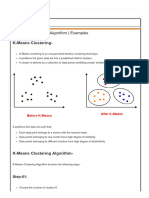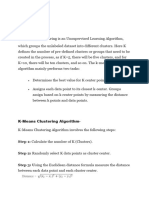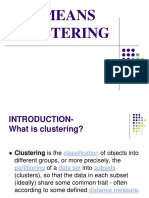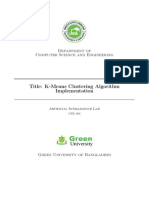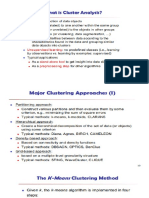0% found this document useful (0 votes)
12 views3 pagesML K-Means
The document illustrates a K-Means clustering example with four data points, aiming to group them into two clusters using the K-Means algorithm. Initial centroids are chosen, distances to these centroids are calculated, and points are assigned to clusters based on proximity. After recalculating centroids and reassessing point assignments, the final clusters remain unchanged, indicating the algorithm has converged.
Uploaded by
mohammadsameerfnadafCopyright
© © All Rights Reserved
We take content rights seriously. If you suspect this is your content, claim it here.
Available Formats
Download as PDF, TXT or read online on Scribd
0% found this document useful (0 votes)
12 views3 pagesML K-Means
The document illustrates a K-Means clustering example with four data points, aiming to group them into two clusters using the K-Means algorithm. Initial centroids are chosen, distances to these centroids are calculated, and points are assigned to clusters based on proximity. After recalculating centroids and reassessing point assignments, the final clusters remain unchanged, indicating the algorithm has converged.
Uploaded by
mohammadsameerfnadafCopyright
© © All Rights Reserved
We take content rights seriously. If you suspect this is your content, claim it here.
Available Formats
Download as PDF, TXT or read online on Scribd
/ 3














